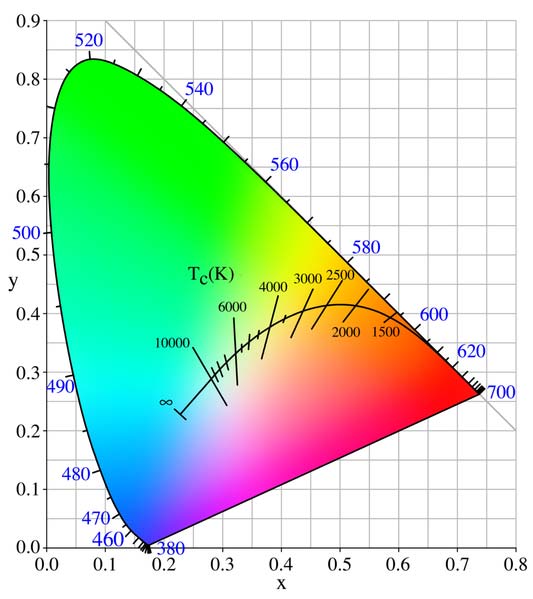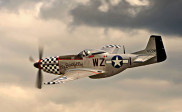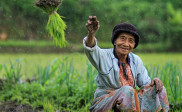Understanding Color Temperature in Photography
Color temperature is an important consideration for photographers. Measured in kelvins (K), color temperature refers to the temperature of electromagnetic radiation emitted by a black body radiator. The lower a color’s temperature, the redder it appears; higher-temperature colors grow progressively bluer as their temperature rises. Digital photographers can easily alter the color temperature (often called the “white balance”) of their photos; this quickly shifts the temperature of the entire photo while keeping the relationships between component colors intact and sparing the photographer the time-consuming process of adjusting the individual colors. Many point-and-shoot digital cameras and consumer photo-editing programs come with several pre-defined temperature options intended to compensate for very sunny or overcast weather. Advanced photographers, however, usually prefer to set their own color temperature parameters.
Color Temperature on Film
Color temperature is also an important consideration for film photography, and often requires special lenses or colored films (called “gels”) to adjust the lighting. Photographers may also elect to use film geared for specific lighting conditions. For example, “daylight film” is calibrated to 5600K; when used to shoot objects or scenes with a high (or “bluer”) color temperature, the net effect is neutrality. The propensity of daylight film to accentuate red and yellow tones is cancelled out by the blue tones in the photo frame.

Compensating on Film
Film photographers cannot instantly manipulate their images because they aren’t digital. To avoid wasting film, they must understand the current lighting conditions and the properties of the film, lenses and filters in use. Depending on their available equipment, a film photographer may have to go to great lengths to produce a color-neutral end product. For example, consider a photographer who has only daylight film in her camera bag. If she photographs a warm, red/yellow candlelit scene using this film, the color balance will probably be heavily skewed towards cooler (redder) colors. Since she only has daylight film, she must attempt to balance the color temperature of her photos with specialized filters or lenses.
Light Meters
To assist in identifying ambient color temperature, many photographers use a color temperature meter. Rudimentary models describe light using a simple red-blue continuum. More advanced (and costly) color temperature meters often include additional colors, such as green. It is also important to note that, while these meters work well in natural light, their results in artificial light can be unreliable; this is particularly an issue with fluorescent lighting because the color the temperature of fluorescent light may change from moment to moment. Consequently, film photographers who frequently shoot in such conditions often use more advanced color and light meters.
Choosing the Proper Remedy
Identifying ambient color temperature is only part of the battle; now the photographer must select the proper corrective filters or gels. Like makeup artists, photographers must correct color problems by incorporating a contrasting color to obtain a neutral result. To neutralize redness, a makeup artist would use a green-tinted concealer; similarly, a photographer working in greenish fluorescent light usually corrects that with a magenta gel laid over the camera lens. To correct high (very blue) color temperatures, a yellowish-orange gel is effective; to correct low (red/orange/yellow) colors, s/he should use a blue filter.
Here is an approximate color temperatures scale for average lighting situations.
1,000 K Candles; oil lamps
2,000 K Very early sunrise; low effect tungsten lamps
3,000 K Studio lights, photo floods
4,000 K Clear flashbulbs
5,000 K Typical daylight; electronic flash
6,000 K Bright sunshine with clear sky
7,000 K Slightly overcast sky
8,000 K Daylight Dull, Foggy weather
9,000 K Open shade on clear day
10,000 K Heavily overcast sky
Baby Steps
Beginning photographers may initially feel a bit confused about color temperature and the photographic challenges color imbalances create. However, s/he will soon learn that measuring and compensating for temperature seems far more complex than it actually is. With a little work on each photo shoot, the neophyte soon becomes a seasoned photographer who is well-equipped to handle problems in this area.




This is a fantastic tutorial on colour temperature and you’ve done a great job of explaining the concept in terms of white balance.
I think it would be worth mentioning that digital photographers have access to, on most DSLRs, a custom white balance feature which I believe is really powerful when it comes to getting the white balance of the image right.
They can shoot a white cheese board using the spot meter through the lens and then set the white balance as a custom WB by referring to the cheese board image.
This pretty much gives perfect colours under those lighting conditions. Beware, that they must keep shooting new images of the cheese board if the lighting changes and then refer to that new image under the custom WB setting.
Hope this adds value to your post.
Cee Dhinjan | Dhinjan.com
Great information on color temperature and it sounds very easy when you explain these. Thanks for sharing.